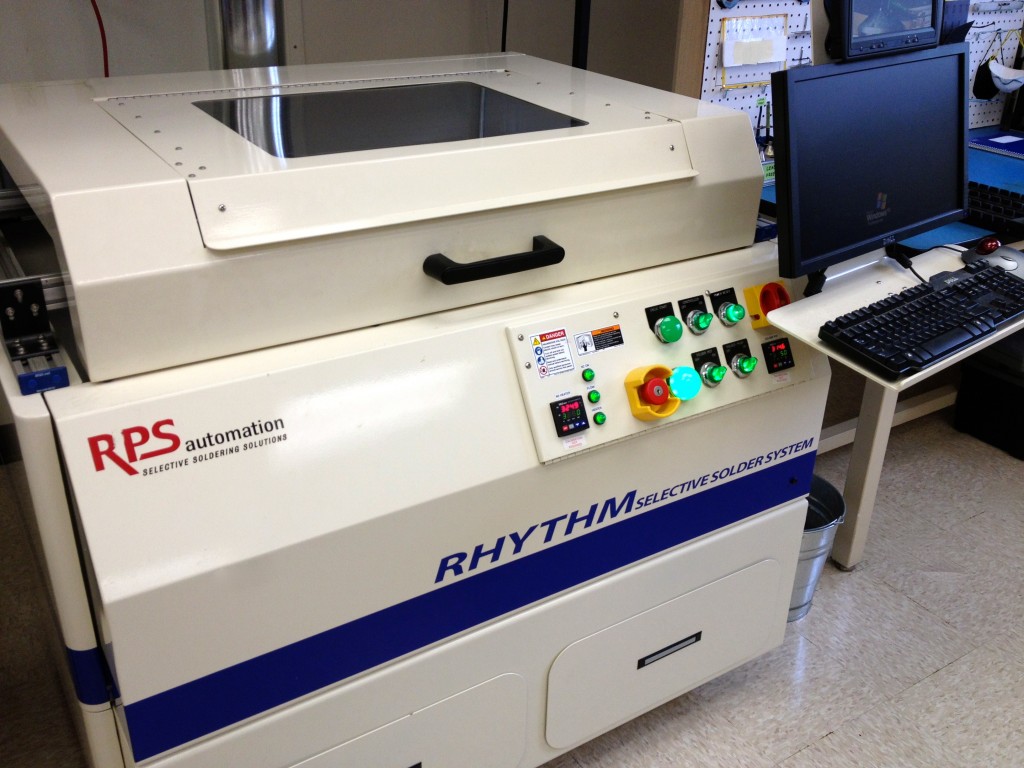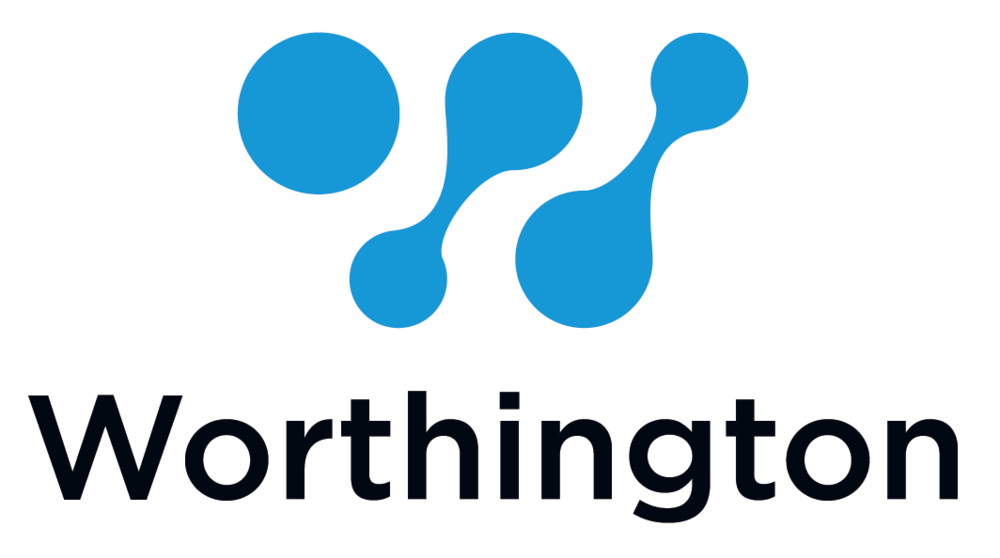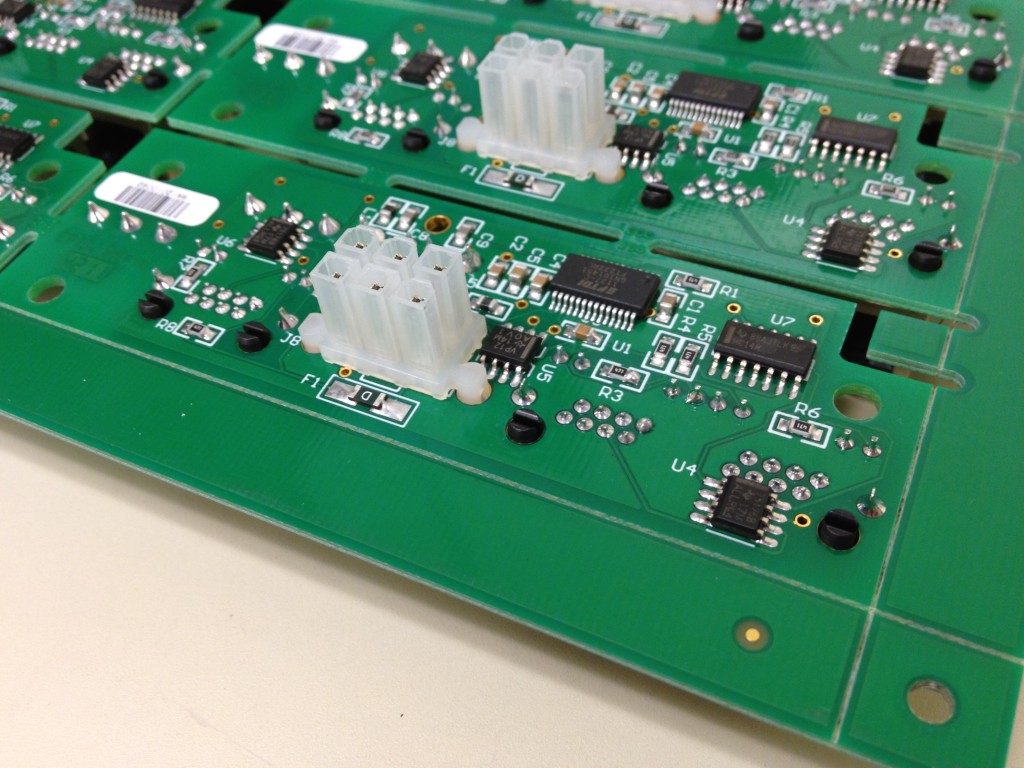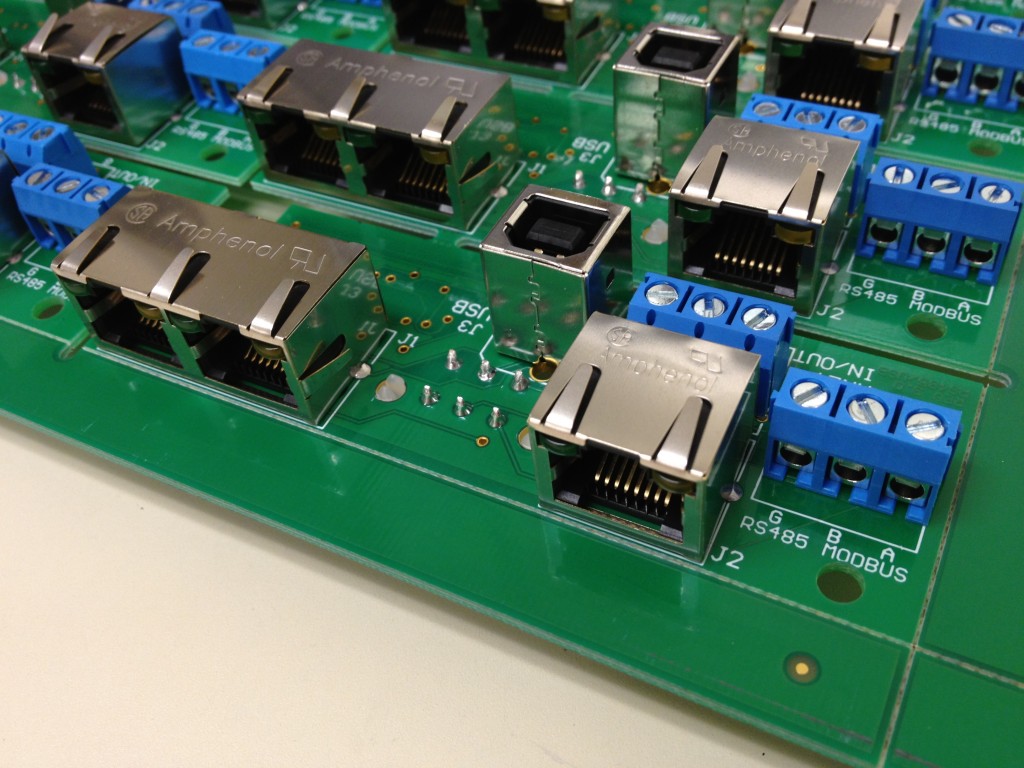Selective Soldering

Early in April we identified that there was a serious need to get one of our machines operational. This was our RPS Automation Rhythm Selective Soldering system.
If you're not familiar with a selective soldering machine, it's basically a machine that creates a small fountain of molten solder that is controlled by an X,Y,Z robotic platform. This platform is then programmed using software, to move to very specific locations on the circuit board and solder the bottom side of the board. Here's a video of it in action.
It's a great machine but we had trouble getting it to work for our needs. It was not soldering our boards very well. It was leaving all sorts of solder bridges that had to be reworked and even missing a lot of solder joints. It was causing a lot of headaches. So something had to he done. A couple phone calls to RPS and we had one of their finest representatives (Adam Zinnecker) in our shop giving us a full 3 days of training, at no charge. He flew out from Spokane Washington and didn't seem to mind waking up at, what felt to him, 4AM.
We learned so much about the equipment as well as the process of selective soldering itself. Selective soldering is still very new in our industry and has a lot of uncharted waters. But after our training we were off and running. We learned all about how to care for the equipment. What sort of maintenance was essential and how to extend the life of wearable items. He went over dozens of techniques to help reduce defects and increase throughput. It was very comprehensive.
Thanks to Adam's help and a bunch of effort we now have probably over 50 unique assemblies programmed on our machine. We have easily run 10-20 thousand circuit boards all together. We have put her through the paces.
Along the way we recognized that our 4" mini wave was not going to be a good solution for us. Another quick couple of phone calls to RPS and we made an arrangement to send them back our 4" mini wave solder pot and receive a gently used lead-free soldering pot. It could not have come at a better time. We received it on a Tuesday morning, put it in the machine, filled it with solder, calibrated it, and ran about 20 assemblies for our customer who came to visit us that afternoon to see it in action. It was an unbelievable day and everything just fell into place for us.
What makes selective soldering particularly unique is that you don't have to worry what parts have already been assembled on the circuit board. Because the machine is programmed you can have it avoid coming into contact with components that would otherwise be damaged. So if you have a circuit board with very large connectors on both sides, no need to worry. Just program the machine to avoid those large connectors and just solder everything else. The following is a picture of an assembly that we make that has very large connectors on both sides. As you can see, there would be no way we could wave solder this circuit board. The only way you would ever have been able to assemble this circuit board before we bought this machine was by hand. It was very time consuming.
But with a selective soldering machine we can solder the large white connector and then go back and solder all of those other connectors on the opposite side. Notice there are a bunch of SMT parts on the side with the white connector too. All of those SMT parts would fall off the board if we tried to wave solder these.
The selective soldering machine has been a great success for us. We solder literally hundreds of circuit boards every day with it. The solder joints are far more consistent and repeatable than hand soldering. And the time it takes for us to solder each board has plummeted. Some products take far less than half the time they used to take us soldering them by hand. And it's a great fit for our continual flow manufacturing operation. More on that in a later post.


